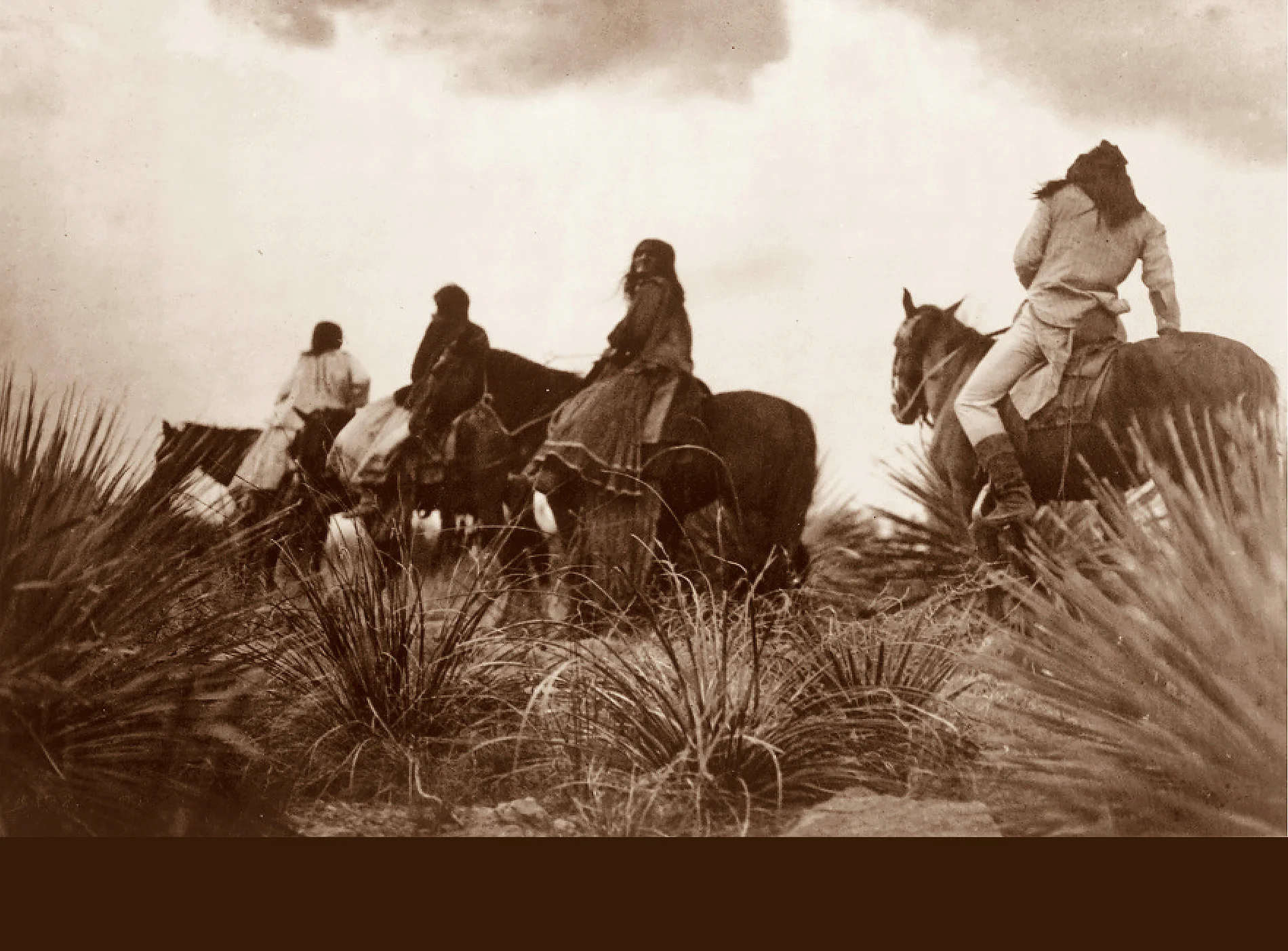Our Story
In 2004, CurtisLithos and ION Corporation published the collection of 20 lithographs titled: “Edward S. Curtis Photographs in The Rainier Club Collection.” This collection is a tribute to the adventurer, photographer and cultural historian Edward S. Curtis on the occasion of the centennial anniversary of The Rainier Club clubhouse in Seattle, Washington. These lithographs are available from independent resellers (galleries, museum stores, frame shops, etc.) as well as online at CurtisLithos.com. In addition to these limited edition lithographs, ION also publishes “open edition” note cards, bookmarks, and other items.
As a follow-up, we published the Centennial Series of 30 lithographs selected from the Edward S. Curtis monumental 20-volume set of photogravures titled “The North American Indian” published between 1907 and 1930. With this edition of Curtis lithographs, the powerful portraits and historic details of a disappearing culture are available as museum quality prints in several sizes and open edition products.
Lithograph Production
In recent years, with the resurgence in interest in Curtis’ work, several sources have emerged producing copies of Curtis’ photographs from the archived collections. The majority of these prints are “one-off” copies using high-quality ink-jet printers.
Unlike these ink-jet and toner-based copies, the lithographs in The Rainier Club Collection and Centennial Series are printed on acid-free, museum-quality paper with fast drying UV inks. While the “sepia-toned” ink-jet copies provide “pleasing” reproductions, often the colors vary greatly from Curtis’ originals. The lithographs in The Rainier Club Collection have been individually color matched to Curtis’ originals by master color separation craftsmen. This makes these lithographic prints unlike any other available.
The twenty lithographic prints included in The Rainier Club Collection of Edward S. Curtis Photographs have been selected from the Curtis photographs and photogravures on display in the hallways, dining and meeting rooms of The Rainier Club in Seattle, Washington. To obtain the highest image quality, 8” x 10” photographic prints and copy negatives of the selected images were purchased from The Library of Congress and, for selected images, high-resolution digital photographs were taken of Curtis’ 1914 original photogravures in the private collection of the law firm of Stoel Rives, LLP.
With the goal of faithfully reproducing the intense detail of Curtis’ originals, Rainier Color Inc., Seattle, WA, was selected to accurately capture the integrity of his photographic genius. The images were individually scanned and color separated on a Heidelberg D 7100 drum scanner. When this process was completed, the images were converted to tri-tones, and proofed on a calibrated color-matched Kodak Approval system until both the ION Corporation and Rainier Color team members were satisfied that the reproduction acuity matched the tonal quality of the originals produced by Curtis during the period 1904 to 1914. To assure the highest quality final lithographic prints, the master craftsmen at Rainier Color then used a Komori Lithrone 8-color UV 40” press to produce the prints on an acid-free, archival-quality Weyerhaeuser 80# & 100# Cougar Natural White Cover weight paper stock.
The images in this collection have been produced in two sizes: The “Centennial Edition” prints are sized to match Curtis’ photogravures. They are trimmed to 15” x 19” with image areas approximately 11” x 15”. The image detail, color and size of the “Centennial Edition” lithographs are faithful in every regard to Curtis’ originals. For individuals more interested in a smaller size, a “Souvenir Edition” was also produced. The lithographs in this edition are trimmed to 9” x 11” with image areas of approximately 5” x 7.”
Edward Sheriff Curtis
Explorer, Photographer, Adventurer
From 1896 to 1930, Edward S. Curtis embarked on an artistic and scholarly project of monumental proportions. His goal was to systematically record the ceremonies, legends, daily life experiences and leaders of every major Native American tribe west of the Mississippi river. In total, Curtis took over 40,000 photographs of eighty tribes.
In addition to his photographic contributions, Curtis made Edison wax cylinder recordings of the music, songs and chants of Native Americans. These recordings were later transcribed into musical notation. Thanks to his efforts, the basic concepts of 75 languages and dialects were preserved and more than 10,000 songs were recorded.
With his camera, Curtis the artist, used lenses and glass-plate negatives much as painters use brushes and canvas. He worked with the distribution of light and shadow, blurred focus, and photo cropping to heighten the dramatic effect of his photographs. Like other photographers in what became known as the “pictorial tradition,” Curtis was artistically influenced by impressionist painters.
Unlike documentary photographers, bound by specific times and places, Curtis’ pictorial techniques sought to depict spiritual and emotional aspects of his subjects. The results were impressionistic and picturesque photographs that, to this day, can be interpreted universally.
Curtis obtained the endorsement of President Theodore Roosevelt and some financial backing from the railroad tycoon, J.P. Morgan, to produce an historic and encyclopedic publication: “The North American Indian.” This set of twenty bound volumes and twenty accompanying portfolios of loose photogravures included 2,232 of his photographs. A complete set occupies almost five feet of shelf space.
Curtis’ goal was to reach a wide audience by publishing and selling sets of “The North American Indian.” While dealers and scholars continue to debate the total number of sets published, the generally accepted number is only 272. Today, approximately 80% of these sets, (between 200 to 225), are locked up in the archives of institutions, museums and libraries. For the most part, they are unavailable to the general public. The balance of the original sets have been broken up and sold to collectors over the years. Today, individual prints of Curtis’ originals in this collection command prices ranging from $1,000 to well over $25,000.



